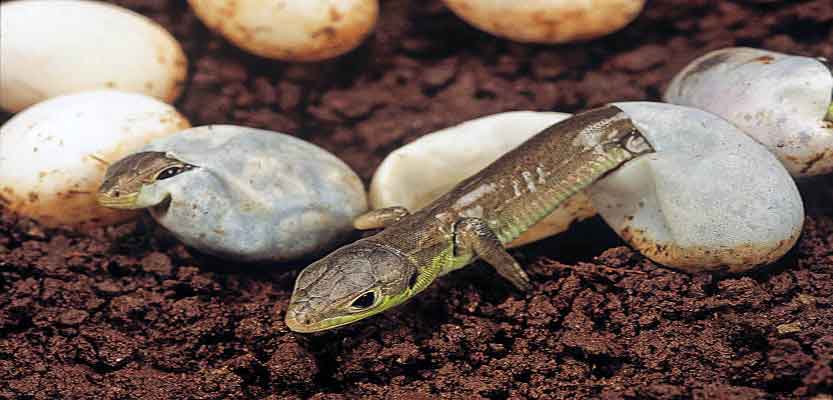
Both are correct. Some lizards lay eggs, while others give birth just like humans. Depending on their environment, there are even species that can switch from laying eggs to giving birth. Researchers in Australia have recently discovered a lizard that lays eggs and gives birth simultaneously for the first time.
So Many Distinct Birthing Methods for Lizards
You may believe that lizard reproduction is a dull topic, but you would be wrong. It is one of the most fascinating species on earth. Why? Because there are so many possible outcomes. Did you know that a female Komodo dragon can become pregnant without the presence of a male?
There is no better illustration of the need for species survival than this. And if there are males available, she will reproduce normally.
Some lizards always lay eggs, while others only reproduce. In the first group, there are geckos, iguanas, and monitor lizards. In the second one, you may have heard of blue tongue lizards, Solomon island lizards, and shingle-back lizards.
The three-toed skink, a lizard that resembles a snake, recently gave birth by simultaneously laying eggs and delivering live young.
Eggs or Natural Birth?
Female lizards typically require the mating of a male and a female in order to lay eggs or give birth. However, as we’ve seen, there are exceptions to the rule. In actuality, lizard reproduction can be handled in a variety of ways that deviate from the general rule.
Some of them will lay eggs in a safe location after mating and then continue on with their lives, while others will give birth to their young and allow them to develop on their own.
You may be wondering why. In fact, civilization has been asking itself this question for millennia: “Which came first? The embryo or the fetus?” The egg is the answer. A study of a variety of Australian lizards has revealed that live birth followed the laying of eggs.
It’s a product of evolution. Live birth has many advantages over laying eggs, which is why some lizard species have evolved to live birth while others, less evolved, continue to lay eggs.
Differences in Every Aspect of Reproduction
The differences between lizards’ reproductive cycles extend far beyond eggs and live birth. Lizards, like most other animals, have a breeding season.
However, it varies significantly between species. It can be seasonal for some, while for others it is based on specific circumstances.
When it comes to egg laying, there is no specific number of eggs laid. Some can deliver a dozen at once, while others can only deliver one. Normally, the incubation process leading to hatching occurs openly in the wild, and it is impossible to predict how many offspring will survive to see the light of day.
Workplace Evolution
The three-toed skink, formally known as Saiphos equalis, in Australia demonstrates that evolution is not merely a theory. Scientists have recently observed a female simultaneously laying eggs and giving live birth. This is a first for any species of reptile.
They already knew that the skink was capable of both laying eggs and giving live birth, so it came as a complete surprise when they witnessed both processes occurring simultaneously during the birthing process.
As previously explained, evolution has caused some lizard species to transition from laying eggs to giving live birth. In fact, more than 150 species are currently known to have done so.
Scientists believe they have witnessed something extremely unique, namely the evolution of a species. According to them, this would explain the fact that both processes were observed.
A Phenomenon Due to the Weather
Some scientists are still uncertain about the evolution pattern, claiming that laying eggs is still a safer way for offspring to be born in some cases. They see no reason why this procedure would change in the coming years.
In fact, research indicates that, depending on the climate, this species will utilize either method. In warmer regions of the country, three-toed skinks lay eggs, whereas in colder regions they give birth to live young.
That is a component of the theory of evolution, and not just for lizards. The “cold-climate hypothesis” suggests that live-bearing could be advantageous in colder climates. However, because there is still so much we do not know about the biology of these lizards, it is difficult to confirm that this is what determines the type of birth in every case.
